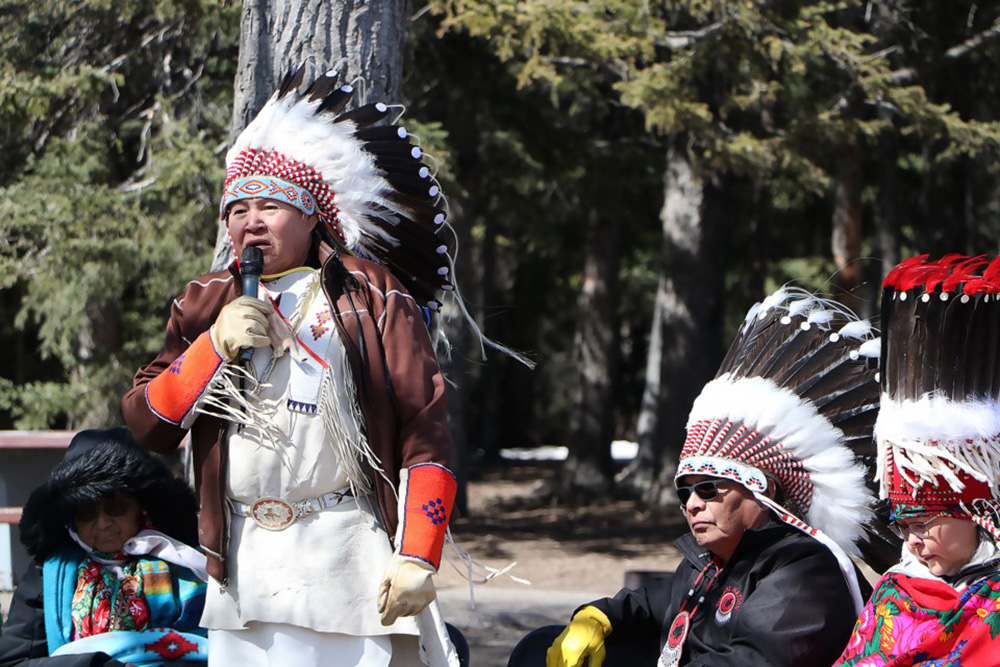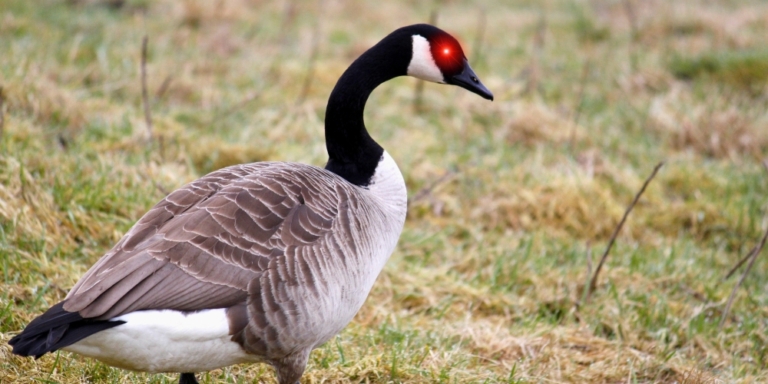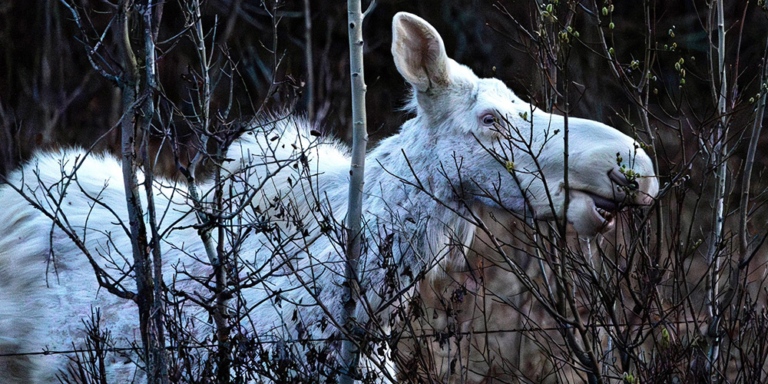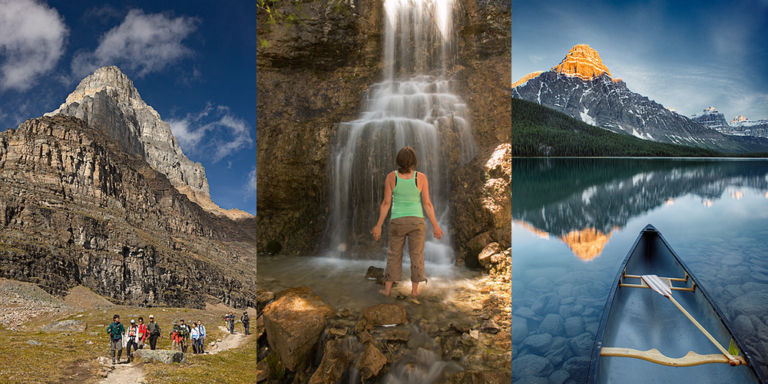Some greetings are universal, and ‘welcome’ is one such greeting.
Nearly every language in the world has its version of ‘welcome.’
But welcome is more than just a word or greeting: it’s a beginning. Someone welcoming you into their home could mark the start of a new relationship or a lifelong friendship.
In the same way, a new sign at Banff National Park marks the start of unforgettable experiences, new memories, and beautiful sights.
However, the new ‘gantry’ sign also serves as a reminder.
Gantry signs are traffic signs mounted on an overhead or cantilever support. They are usually built on high-traffic roads with several routes and lanes.
On April 10, the Otipemisiwak Métis Government of the Métis Nation of Alberta launched the Banff National Park Indigenous Advisory Circle’s gantry sign initiative.
The initiative includes a road sign that welcomes visitors to Banff National Park in the languages of our province’s Indigenous cultures.
The sign reads, “Âba wathtech, oki, miyoonakishkatoohk, umba wathtāch, gwàdànisaàli nàdànásdàtłˈí, okâch.”
Each word and phrase means the following:
- Âba wathtech – a greeting used by Bearspaw First Nation to say ‘good day’
- Oki – the Blackfoot word for ‘hello’
- Miyoonakishkatoohk – the word for ‘welcome’ in Michif
- Umba wathtāch – a common phrase used by Chiniki and Goodstoney First Nations to say something similar to ‘good day’
- gwàdànisaàli nàdànásdàtłˈí – the Tsuut’ina phrase for ‘welcome, we are glad you are here’
- Okâch – a Stoney word used by all three Nations that roughly translates to ‘there is open space for someone to join.’
“It’s a big thing that our languages are going to be seen by the world here. To know who the first people are that have been here since time immemorial,” Shay Runner, Tsuut’ina Nation councillor, told Rocky Mountain Outlook.
Runner hopes the initiative will encourage visitors to immerse themselves in Indigenous culture. The Banff National Park Indigenous Advisory Circle shares the same hope.
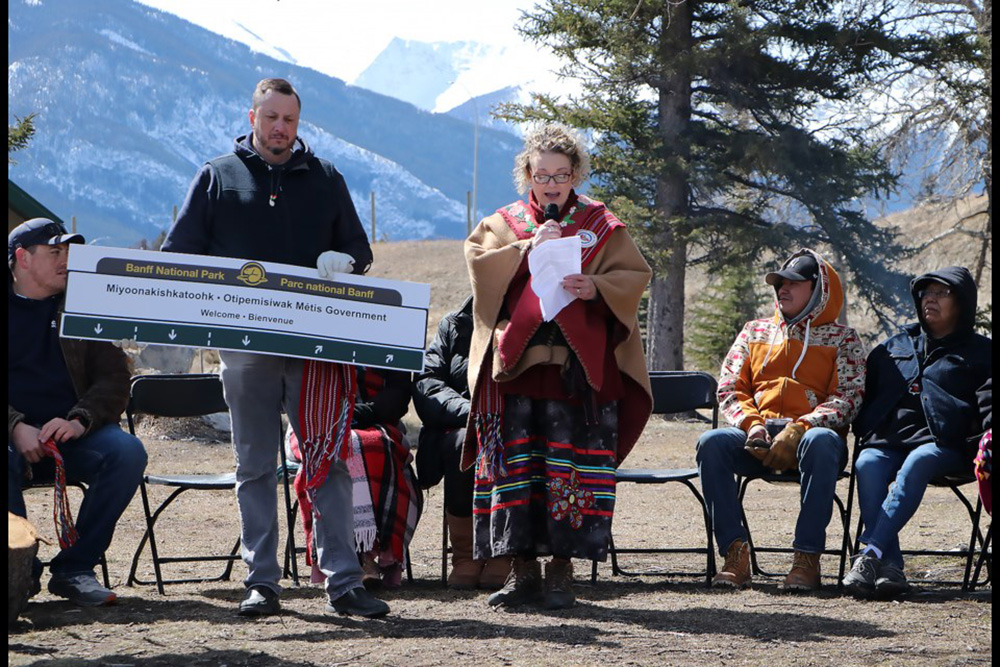
A Long Time Coming
The Circle was established in 2018 to understand better Indigenous perspectives and priorities regarding their relationship with Parks Canada.
The group is made up of members from eight of Alberta’s Indigenous communities, including the Bearspaw, Chiniki, and Goodstoney First Nations, the Siksika, Kainai, and Piikani First Nations, the Tsuut’ina First Nation and the Métis Nation of Alberta.
The Circle shares knowledge and provides input, advice, and recommendations to park superintendents on topics, issues, and opportunities.
According to Parks Canada’s 2022 Management Plan, one of the Circle’s key objectives is to “restore the connection of Indigenous peoples to their traditional territory.”

Piikani elder Herman Many Guns believes language is the gateway to reconnecting with the land. He carries the name of Sitting Behind an Eagle Tail, the Piikani signatory of Treaty 7 in 1877, who is also his great-great-grandfather.
“I carry that name…to acknowledge all the sacred people in our cultures…sacred societies that we have to maintain our language, customs, and beliefs that tie us to the land…,” he said.
Another objective of the Circle is Indigenous recognition.
“As Métis, we’ve been fighting for our very existence and recognition for over 200 years,” said Amber Boyd, district captain of the Otipemisiwak Métis Government of the Métis Nation of Alberta.
While the gantry sign initiative is a step in the right direction, much more must be done to recognize our province’s many Indigenous cultures properly.
But just as ‘welcome’ is a beginning, so too is the gantry sign initiative.
